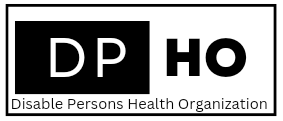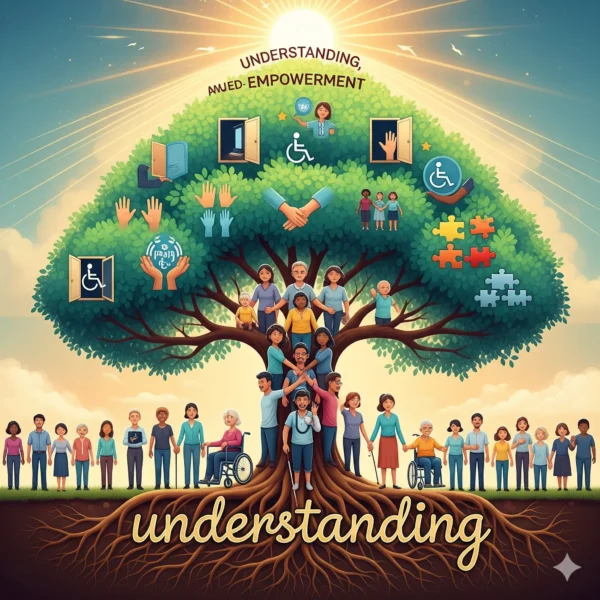Disability has always been a part of the human experience. Across history and cultures, millions of people have lived with physical, sensory, intellectual, or mental health conditions that affect their daily lives. The term disabled persons refers to individuals who face long-term impairments that, when combined with environmental and social barriers, restrict their full participation in society.
According to the World Health Organization (WHO), more than 1.3 billion people—around 16% of the global population—live with some form of disability. This makes persons with disabilities (PWDs) one of the largest minority groups in the world. Despite their numbers, they often face exclusion, discrimination, and lack of opportunities.
This article explores the meaning of disability, the challenges disabled persons face, their rights, and the global efforts toward inclusion. It will also highlight inspiring success stories and the role of technology in improving the lives of people with disabilities.
See MOre: Best Gaming Wheelchair 2025
Understanding Disability
Definitions and Perspectives

Disability is not just a medical condition. It is shaped by the interaction between individuals and their environment. Two major perspectives help us understand disability:
- Medical Model of Disability – Views disability as a problem within the individual caused by disease, injury, or health condition. The solution lies in treatment, rehabilitation, or cure.
- Social Model of Disability – Focuses on society’s barriers—physical, attitudinal, and institutional—that prevent disabled persons from full participation. According to this view, the problem is not the impairment itself, but how society is structured.
The United Nations Convention on the Rights of Persons with Disabilities (UNCRPD), adopted in 2006, promotes the social model and emphasizes dignity, equality, and inclusion.
Types of Disabilities

Disabilities can be categorized into several groups:
- Physical Disabilities: Conditions affecting mobility (e.g., spinal cord injury, cerebral palsy, amputations).
- Sensory Disabilities: Hearing loss, deafness, blindness, or low vision.
- Intellectual Disabilities: Conditions that affect cognitive functioning, such as Down syndrome or developmental delays.
- Psychosocial Disabilities: Mental health conditions such as depression, bipolar disorder, or schizophrenia.
- Invisible Disabilities: Chronic pain, learning disabilities, or neurological disorders that may not be immediately visible.
Historical Attitudes Toward Disability

Throughout history, persons with disabilities have experienced a range of treatment, from neglect and discrimination to acceptance and empowerment.
- Ancient Times: In some cultures, disabled individuals were worshipped as having divine powers, while in others they were abandoned.
- Middle Ages: Disability was often misunderstood as a punishment for sins. Many disabled persons were excluded from mainstream society.
- Industrial Revolution: As work became more physically demanding in factories, disabled persons were often left unemployed.
- 20th Century: Wars produced large numbers of injured soldiers, leading to advances in rehabilitation and prosthetics.
- Modern Era: Human rights movements and disability activism have pushed for legal protections, accessibility, and equal opportunities.
Challenges Faced by Disabled Persons
Despite progress, people with disabilities still face multiple barriers:
1. Education
Access to quality education is one of the biggest challenges. Many schools lack inclusive classrooms, trained teachers, or accessible materials. Children with disabilities are twice as likely to be out of school compared to their peers.
2. Employment
Workplace discrimination remains common. Employers may underestimate the abilities of disabled persons, leading to fewer job opportunities. The International Labour Organization (ILO) reports that the global employment rate of people with disabilities is significantly lower than that of people without disabilities.
3. Accessibility
Many public spaces, transportation systems, and digital platforms remain inaccessible. Without ramps, lifts, sign language interpreters, or accessible websites, disabled individuals struggle to participate fully in society.
4. Healthcare
Disabled persons often face barriers in accessing health services, including lack of trained staff, inaccessible facilities, and higher medical costs.
5. Social Stigma and Discrimination
Negative stereotypes portray disabled persons as dependent, weak, or less capable. These attitudes lead to social exclusion, bullying, and discrimination.
6. Poverty
Disability and poverty are closely linked. Many people with disabilities live in low-income households due to unemployment, high medical expenses, and lack of social support.
Disability Rights and Legislation
Over the past few decades, significant progress has been made in advancing the rights of disabled persons.
International Frameworks
- United Nations Convention on the Rights of Persons with Disabilities (CRPD): A landmark treaty adopted in 2006 that has been ratified by more than 185 countries. It ensures equal rights, accessibility, and participation.
- Sustainable Development Goals (SDGs): Many goals specifically reference disability inclusion, especially in education, work, and reducing inequality.
National Laws
Countries have introduced disability rights acts to ensure equal opportunities. Examples include:
- Americans with Disabilities Act (ADA) – United States
- Disability Discrimination Act – United Kingdom
- Rights of Persons with Disabilities Act – India
- Disability Inclusion Act – Australia
These laws provide protection against discrimination and promote accessibility in employment, education, and public life.
Inclusion and Empowerment
Creating an inclusive society requires active measures in several areas:
Inclusive Education
Schools must adopt universal design for learning, provide accessible textbooks (e.g., Braille, audio books), and train teachers in special education. Peer support programs can also foster understanding among students.
Employment Opportunities
Workplaces should implement inclusive hiring policies, provide reasonable accommodations, and promote disability awareness training. Successful inclusion benefits both the individual and the organization, as diverse teams foster innovation.
Accessibility and Universal Design
Universal design benefits everyone. Ramps, elevators, captioned videos, and accessible websites not only help disabled persons but also improve usability for the elderly, children, and others.
Representation in Media and Politics
Positive representation in films, TV, and social media can challenge stereotypes. Political participation also ensures that disabled persons can influence policies that affect them.
Technology and Disability
Advancements in technology have greatly enhanced the independence of people with disabilities.
- Assistive Technologies: Wheelchairs, hearing aids, screen readers, prosthetics, and voice-recognition software.
- Digital Accessibility: Websites designed with alt text, captions, and screen-reader compatibility.
- Smart Devices: Voice assistants, navigation apps for the visually impaired, and health-monitoring devices.
- Innovative Research: Bionic limbs, brain-computer interfaces, and AI-driven accessibility tools are opening new possibilities.
Inspiring Stories
Many disabled persons have broken barriers and achieved greatness:
- Helen Keller: Despite being deaf and blind, she became a world-famous author and activist.
- Stephen Hawking: A physicist with ALS who contributed groundbreaking theories in cosmology.
- Marlee Matlin: An Academy Award–winning deaf actress.
- Nick Vujicic: Born without limbs, he became a motivational speaker and author.
- Muniba Mazari (Pakistan): A wheelchair user who became an artist, model, and UN Women ambassador.
These stories prove that disability does not define ability.
Disability and Culture
Cultural perceptions of disability vary worldwide. In some societies, disability is stigmatized, while in others it is accepted as part of human diversity. Arts, sports, and literature are powerful platforms where disabled persons have expressed themselves and challenged prejudices.
Paralympic Games
The Paralympics showcase the athletic abilities of disabled persons, proving that they can achieve excellence in sports. These events also raise awareness about inclusivity.
The Road Ahead: Building an Inclusive World
To create a truly inclusive society, collective effort is required from governments, organizations, communities, and individuals. Some key steps include:
- Strengthening laws and enforcing policies for accessibility.
- Promoting disability-inclusive education at all levels.
- Encouraging employers to adopt diversity and inclusion practices.
- Making technology and infrastructure universally accessible.
- Changing attitudes through awareness campaigns and representation in media.
- Supporting disability organizations and involving disabled persons in decision-making.
Conclusion
Persons with disabilities are not defined by their limitations but by their strengths, resilience, and contributions. They are students, workers, leaders, artists, scientists, and community members. Disability is a natural part of the human experience, and societies must evolve to embrace diversity and ensure equality.
By removing barriers and fostering inclusion, we can empower disabled persons to live with dignity, independence, and opportunities. In doing so, we enrich not only their lives but the fabric of society as a whole.
Do you want me to also format this into a ready-to-use Word/PDF file with headings, citations, and professional layout so you can easily share or publish it?



